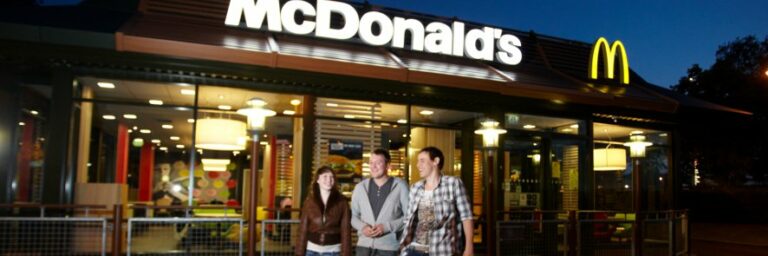McDonald’s has announced plans to improve welfare standards for all the chicken it buys in its main global markets of Australia, Canada, France, Germany, Italy, Ireland, the Netherlands, Poland, Russia, South Korea, Spain, Switzerland, UK, and US.
Chicken now outsells beef in UK McDonald’s restaurants, and according to UK supply chain director Connor McVeigh, who spoke at EPIC in Newport this week, the foodservice giant was planning to soon add more chicken dishes to its UK menu.
Its newly announced global commitment on chicken welfare comprises eight points, which the firm said would be fully implemented by 2024.
- Improved Farm-Level Welfare Outcomes: Source chickens for the McDonald’s System that are raised with improved welfare outcomes. We plan to set targets, measure performance and report on key farm-level welfare outcomes across our largest markets.
- Innovative On-Farm Animal Health and Welfare Monitoring Technologies: Partner with technology companies, producers, and suppliers to develop on-farm monitoring systems to automate the gathering of key animal health and welfare indicators, including behavioural measures. Once established, these technologies will highlight potential areas for improvement in real time and will be among the first of their kind available at a commercial scale.
- Natural Behaviour: Require chickens to be raised in housing environments that promote natural behaviours such as pecking, perching and dust-bathing. These behaviours are encouraged through enrichments, such as the provision of perches and pecking objects, access to floor litter 100% of the time, and providing a minimum of 20 lux light intensity during photoperiods, with a minimum of 6 hours of darkness (4 hours to be continuous) during a 24 hour time period, reflecting scientific evidence from poultry experts.
- Commercial Trials on Production Inputs: Conduct commercial trials across select markets in partnership with our largest global chicken suppliers to study the effect that various production parameters have on key welfare outcomes within large-scale, commercial conditions. These trials will measure the effects of inputs such as lighting, stocking density (space allowance), and genetics. This will enable us to identify best practices that support improved farm welfare outcomes in specific climates across the globe.
- Stunning: In the U.S. and Canada, transition to sourcing chickens that have been stunned by the use of Controlled Atmospheric Stunning (CAS), a method that is approved by the U.S. Department of Agriculture (USDA) and the Canadian Food Inspection Agency (CFIA). CAS is currently practiced by many approved suppliers for McDonald’s restaurants in Europe and Australia.
- Accountability: Establish third party audits to ensure suppliers farms are in compliance with McDonald’s new and more comprehensive chicken welfare standards.
- Feasibility Study: Complete an assessment by the end of 2018 to measure the feasibility of extending these commitments to the remaining global markets where McDonald’s operates.
- McDonald’s Advisory Council for Chicken Sustainability: Establish a global, multi-stakeholder Advisory Council focused on chicken sustainability, with participation from academics and scientists, suppliers and industry experts, animal welfare and environmental advocates to support our continued journey on chicken sustainability, inclusive of health and welfare.


